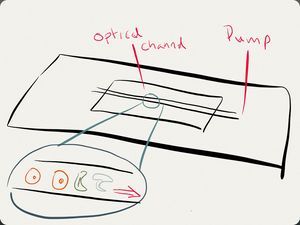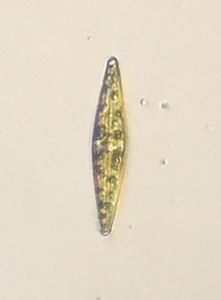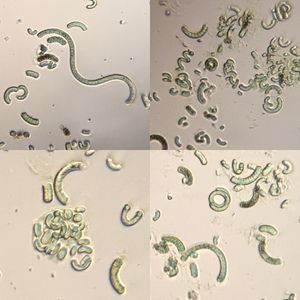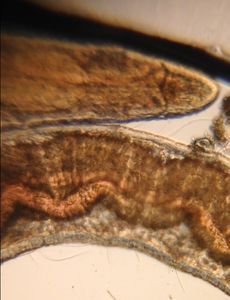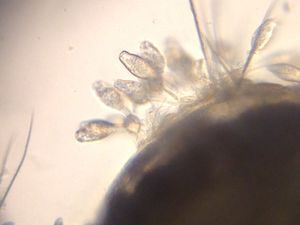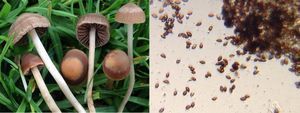Fungus on a fly
 May 24, 2016 • 11:54 AM UTC
May 24, 2016 • 11:54 AM UTC United States
United States 140x Magnification
140x Magnification Microorganisms
Microorganisms
damontighe
I currently work as a Curriculum and Training Specialist at Bio-Rad laboratories and help teachers incorporate more biotechnology into their classroom. I worked in DNA sequencing for years including the Human Genome Project and single cell genomics (termite, cow, and other guts). I have a love of the outdoors that I spread to the public via Calnature.org. I enjoy backpacking, picking mushrooms and photography.
15posts
17comments
9locations
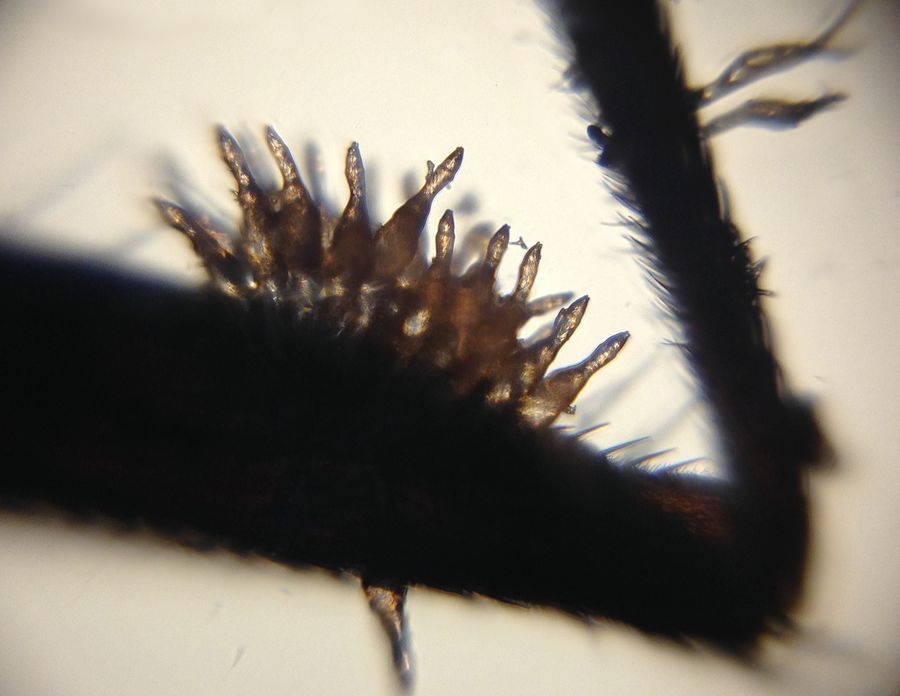
Today while trying to do emails at home with the windows open I had a fly buzzing around and I gave swipe at it which in most cases does nothing but move the fly out of my general space for a few minutes, but today my flailing finger actually made contact with the insect. I stopped what I was doing and noticed it was crawling on the ground, so moved it into a container where I could get a better look at it and to my surprise it appeared to have a fungal infection and to my further surprise it does not look like the Entomophthora muscae that I had purposely and successfully infected my compost fruit flies with a year ago from a specimen I found at Point Reyes, CA. For the whole story see: http://www.inaturalist.org/observations/1373764
Here is the fly, photographed using a little clip on macro lens that fits on my phone
Here is the fly, photographed using a little clip on macro lens that fits on my phone
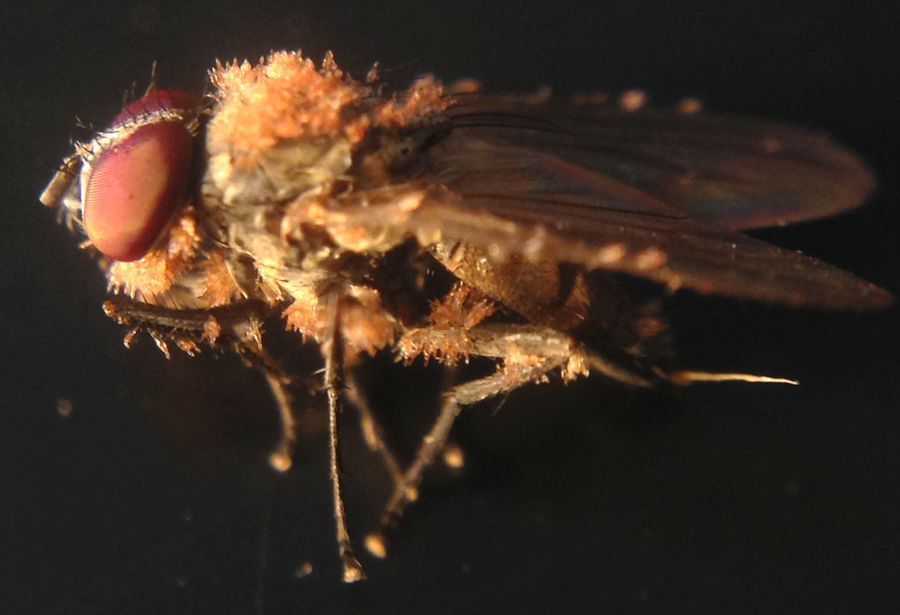
And here is the Foldscope shot of one of the fly legs showing the asci

Questions generated by this observation: What species of fungi is this? Is it a described species? Can I use this to infect other flies in this taxa and use it as a biological control on flies in the building? Will these asci further mature to eventually shoot spores event though the host is dead? I’m hoping to get the species or at least taxa questions answered here: http://www.inaturalist.org/observations/3291539
How to find fungal infected insects: I had always thought that fungi that infect insects exist only in exotic warm places since National Geographic did a bang up job of filming Cordycep fungi sprouting out of ants in the Amazonian tropics and the caterpillar mushroom of Chinese medicine fame (mainly for its supposed Viagra like effects) adorns summery sweaty the mountains of Tibet. However, there are plenty of fungi infecting insects in almost every climate. In California we have a few Cordyceps that attack caterpillars, but unless you are spending ample amount of times in the woods the most likely insect you’ll find infected are flies. The way to find them is to look for flies that are perched up high on leaves or in your kitchen. The Entomophthora muscae which I find fairly frequently disables the fly’s ability to fly and causes it to climb to the highest spot it can reach as for the fungi this will give maximum spore dispersal. Look close at the fly and your looking for a pink fuzz emerging from the joints of abdomen. If you find dead flies up high on a window you’ll often find a mist of spores stuck to the window around them. Happy hunting!
How the Foldscope image was taken: I removed one leg from the expired fly and placed it on a glass slide and loosely placed a coverslip over it. I had previously given the slide and the coverslip a good wipe down with a lens paper. I then used the low magnification (140x) lens on the foldscope with the magnetic attachment system of the Foldscope with an iphone5. I had the Foldscope up to a window and moved it up and down until I got a contrast I like. I took two images with different fields of view and merged them in GIMP to get a bigger depth of field.
How to find fungal infected insects: I had always thought that fungi that infect insects exist only in exotic warm places since National Geographic did a bang up job of filming Cordycep fungi sprouting out of ants in the Amazonian tropics and the caterpillar mushroom of Chinese medicine fame (mainly for its supposed Viagra like effects) adorns summery sweaty the mountains of Tibet. However, there are plenty of fungi infecting insects in almost every climate. In California we have a few Cordyceps that attack caterpillars, but unless you are spending ample amount of times in the woods the most likely insect you’ll find infected are flies. The way to find them is to look for flies that are perched up high on leaves or in your kitchen. The Entomophthora muscae which I find fairly frequently disables the fly’s ability to fly and causes it to climb to the highest spot it can reach as for the fungi this will give maximum spore dispersal. Look close at the fly and your looking for a pink fuzz emerging from the joints of abdomen. If you find dead flies up high on a window you’ll often find a mist of spores stuck to the window around them. Happy hunting!
How the Foldscope image was taken: I removed one leg from the expired fly and placed it on a glass slide and loosely placed a coverslip over it. I had previously given the slide and the coverslip a good wipe down with a lens paper. I then used the low magnification (140x) lens on the foldscope with the magnetic attachment system of the Foldscope with an iphone5. I had the Foldscope up to a window and moved it up and down until I got a contrast I like. I took two images with different fields of view and merged them in GIMP to get a bigger depth of field.
Sign in to commentNobody has commented yet... Share your thoughts with the author and start the discussion!
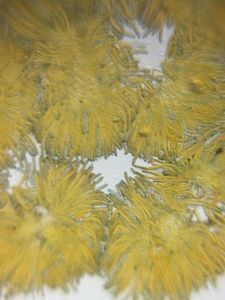
 0 Applause
0 Applause 0 Comments
0 Comments
